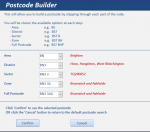fat controller
Slightly round the bend..
- Local time
- Today, 23:49
- Joined
- Apr 14, 2011
- Messages
- 758
As some of you already know, I work in public transport, and I am thinking ahead about creating a database that will allow us to keep tabs on disruptions that occur on our routes; some disruptions will affect one route, some will affect multiple, and a few will affect all. We have 120+ route numbers (alphanumeric) to consider, and these can change over time.
What I would like to do is have the ability to record disruptions with the following info
Start Date
End Date
Route(s) affected
What the disruption was
What the effect was
What type (eg Gas, Water, Electricity, Re-surfacing, Landscaping) - probably best stored in a table so they can be added to
Postal Code area (first half)
It would need to be as easy as possible for a user to select as many routes are affected (preferably if they could type them in separated by commas would be nice), to then be able to be recalled at a later date either by postal area search, a disruption type search or by searching for one route number, all within selected date parameters.
Clearly I will need a table for the routes, a table for the postal areas, a table for the disruption types, and a table for the disruption details - all fairly straight forward so far. What I can't work out is how to handle the route numbers to make them searchable later on, if they are stored in multiple? The same applies to the postal code search - what if more than one postal area is affected by a disruption.
As I say, I am at thinking stage only at the moment, so now is the time to gather thoughts and opinions to get the structure right from the start, rather that making a bit of a mess of it and having to faff around with vba just to get it sort of working.
What do you think ladies and gents?
What I would like to do is have the ability to record disruptions with the following info
Start Date
End Date
Route(s) affected
What the disruption was
What the effect was
What type (eg Gas, Water, Electricity, Re-surfacing, Landscaping) - probably best stored in a table so they can be added to
Postal Code area (first half)
It would need to be as easy as possible for a user to select as many routes are affected (preferably if they could type them in separated by commas would be nice), to then be able to be recalled at a later date either by postal area search, a disruption type search or by searching for one route number, all within selected date parameters.
Clearly I will need a table for the routes, a table for the postal areas, a table for the disruption types, and a table for the disruption details - all fairly straight forward so far. What I can't work out is how to handle the route numbers to make them searchable later on, if they are stored in multiple? The same applies to the postal code search - what if more than one postal area is affected by a disruption.
As I say, I am at thinking stage only at the moment, so now is the time to gather thoughts and opinions to get the structure right from the start, rather that making a bit of a mess of it and having to faff around with vba just to get it sort of working.
What do you think ladies and gents?


